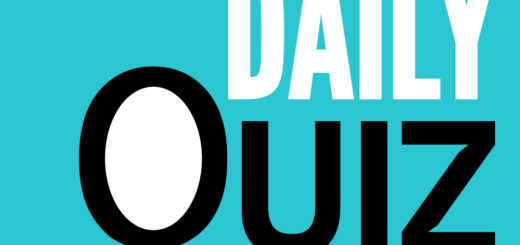Daily Current Affair Quiz: 25th Feb 2020
1. Which of the following statements are true?
1. The Law Commission of India is a statutory body constituted by the Government of India from time to time.
2. The Law Commission shall, on a reference made to it by the Central Government or suo-motu, undertake research in law and review of existing laws in India for making reforms therein and enacting new legislations.
(a) 1 only
(b) 2 only
(c) Both 1 and 2
(d) Neither 1 nor 2
Ans: b
Justification:
- The Law Commission of India is a non-statutory body constituted by the Government of India from time to time.
- The Law Commission shall, on a reference made to it by the Central Government or suo-motu, undertake research in law and review of existing laws in India for making reforms therein and enacting new legislations.
- It shall also undertake studies and research for bringing reforms in the justice delivery systems for elimination of delay in procedures, speedy disposal of cases, reduction in the cost of litigation etc.
- The Commission was originally constituted in 1955 and is re-constituted every three years.
- The tenure of twenty-first Law Commission of India was up to 31st August 2018.
2. PM Ujjwala Yojana is associated with
(a) Distribution of LPG connection
(b) Sub set of PM Awas Yojana
(c) Organic Farming
(d) Solar Energy Initiative
Ans: a
Justification:
- Pradhan Mantri Ujjwala Yojana (PMUY) was launched in 2016 to distribute 50 million LPG connections to women of BPL families.
- The scheme led to an increase in LPG consumption by 56% in 2019 as compared to 2014.
3. Which of the following statements are true
1. The Global MICS Programme was developed by World Bank in the 1990s.
2. MICS is designed to collect statistically sound, internationally comparable estimates of about 130 indicators to assess the situation of children, women and men in the areas of health, education, and child protection.
(a) 1 only
(b) 2 only
(c) Both 1 and 2
(d) Neither 1 nor 2
Ans: b
Justification:
- Multiple Indicator Cluster Survey (MICS)
- The Global MICS Programme was developed by UNICEF in the 1990s.
- It collects internationally comparable data on a wide range of indicators on the situation of children and women for use in policies, programmes, and national development plans.
- MICS is designed to collect statistically sound, internationally comparable estimates of about 130 indicators to assess the situation of children, women and men in the areas of health, education, and child protection.
- MICS is a rich source of data on the Sustainable Development Goals (SDGs), collecting about 33 SDG indicators.
4. Which of the following statement/s is/are true.
1. NITI Aayog is neither statutory, nor constitutional body.
2. It aims to achieve Sustainable Development Goals and to enhance cooperative federalism by fostering the involvement of State Governments of India in the economic policy-making process using a bottom-up approach.
(a) 1 only
(b) 2 only
(c) Both 1 and 2
(d) Neither 1 nor 2
Ans: c
Justification:
- The Government, in January 2015, replaced Planning Commission with NITI Aayog (National Institution for Transforming India).
- NITI Aayog is neither statutory, nor constitutional, it is established by an executive resolution.
- It is a government think tank/ Advisory body that advocates a holistic approach towards development of India.
- It aims to achieve Sustainable Development Goals and to enhance cooperative federalism by fostering the involvement of State Governments of India in the economic policy-making process using a bottom-up approach.
- The institution has to provide governments at the central and state levels with relevant strategic and technical advice across the spectrum of key elements of policy.
5. Which of the following statement is not true Wrt. Battle of Plassey?
(a) The Battle of Plassey was a decisive victory of the British East India Company
(b) The battle was preceded by an attack on British-controlled Calcutta by Nawab Siraj-ud-Daulah and the Black Hole massacre.
(c) Robert Clive was a part of the battle
(d) It was fought on the banks of the Sutlej river.
Ans: d
Justification:
- The Battle of Plassey was a decisive victory of the British East India Company over the Nawab of Bengal and his French allies on 23 June 1757, under the leadership of Robert Clive which was possible due to the defection of Mir Jafar Ali Khan, who was Siraj-ud-Daulah’s commander in chief. The battle helped the Company seize control of Bengal. Over the next hundred years, they seized control of the entire Indian subcontinent and Myanmar.
- The battle took place at Palashi (Anglicised version: Plassey) on the banks of the Hooghly River.
- The battle was preceded by an attack on British-controlled Calcutta by Nawab Siraj-ud-Daulah and the Black Hole massacre. The British sent reinforcements under Colonel Robert Clive and Admiral Charles Watson from Madras to Bengal and recaptured Calcutta.













